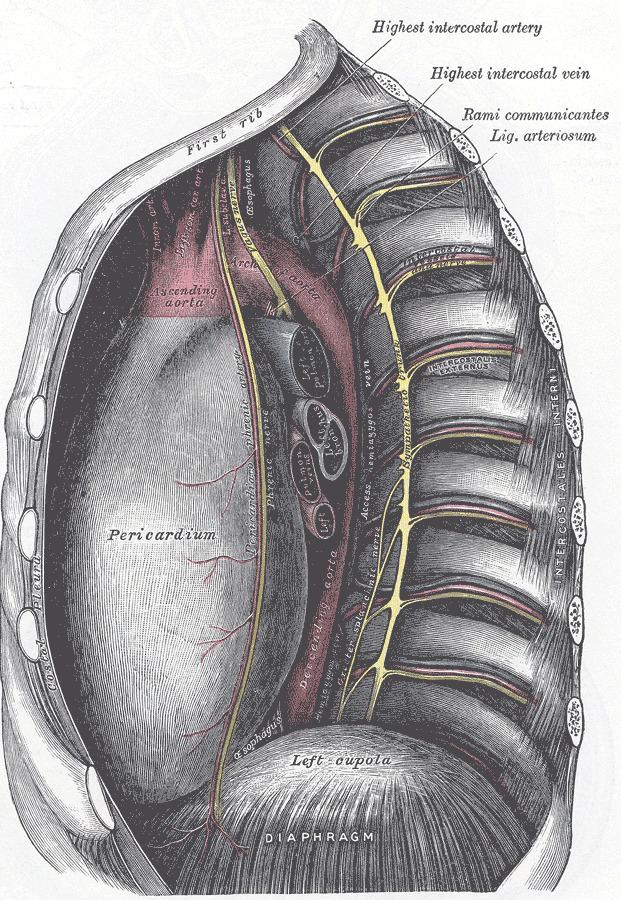Latin Ligamentum arteriosum TA A12.2.01.202 | Dorlands/Elsevier l_09/12491658 FMA 13421 | |
 | ||
The ligamentum arteriosum (Latin: arterial ligament) is a small ligament that is the remnant of the ductus arteriosus formed within three weeks after birth.
At the superior end, the ligamentum attaches to the aorta—at the final part of the arch of aorta (the isthmus of aorta) or the first part of the descending aorta. On the other, inferior end, the ligamentum is attached to the top of the left pulmonary artery.
The ligament is a vestige of the ductus arteriosus, a temporary fetal structure that shunts blood from the pulmonary arteries to the aorta, in order to avoid circulating blood to the lungs, which are inactive in the womb. The ductus arteriosus becomes the ligamentum arteriosum within three weeks of birth, so that deoxygenated blood can be selectively circulated to the lungs for more efficient oxygenation of the blood.
The ligamentum arteriosum is closely related to the left recurrent laryngeal nerve, a branch of the left vagus nerve. After splitting from the left vagus nerve, the left recurrent laryngeal loops around the aortic arch behind the ligamentum arteriosum, after which it ascends to the larynx.
This ligament also plays a role in major trauma; it fixes the aorta in place during rapid decelerations recoil, consequently potentially resulting in ruptured aorta.
